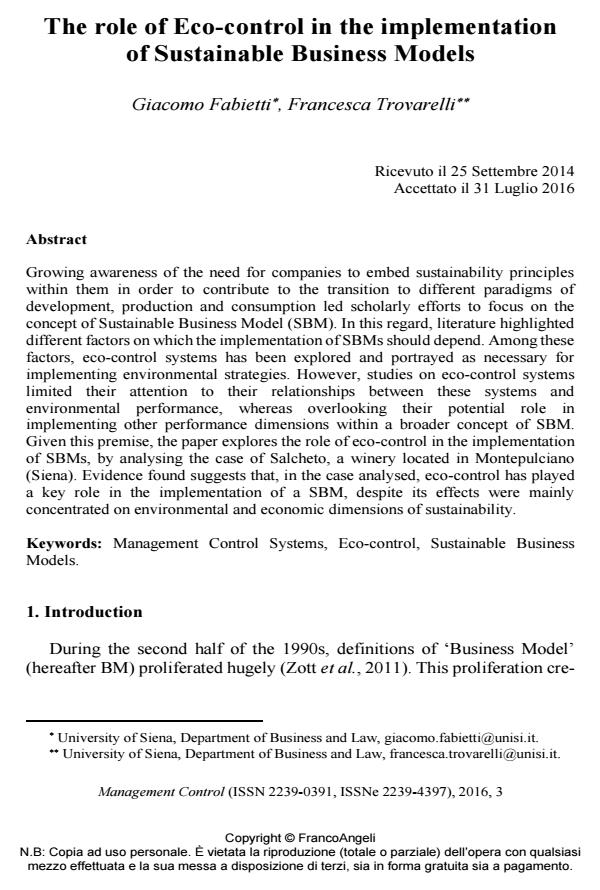The role of Eco-control in the implementation of Sustainable Business Models
Titolo Rivista MANAGEMENT CONTROL
Autori/Curatori Giacomo Fabietti, Francesca Trovarelli
Anno di pubblicazione 2016 Fascicolo 2016/3
Lingua Inglese Numero pagine 32 P. 141-172 Dimensione file 575 KB
DOI 10.3280/MACO2016-003008
Il DOI è il codice a barre della proprietà intellettuale: per saperne di più
clicca qui
Qui sotto puoi vedere in anteprima la prima pagina di questo articolo.
Se questo articolo ti interessa, lo puoi acquistare (e scaricare in formato pdf) seguendo le facili indicazioni per acquistare il download credit. Acquista Download Credits per scaricare questo Articolo in formato PDF

FrancoAngeli è membro della Publishers International Linking Association, Inc (PILA)associazione indipendente e non profit per facilitare (attraverso i servizi tecnologici implementati da CrossRef.org) l’accesso degli studiosi ai contenuti digitali nelle pubblicazioni professionali e scientifiche
Growing awareness of the need for companies to embed sustainability principles within them in order to contribute to the transition to different paradigms of development, production and consumption led scholarly efforts to focus on the concept of Sustainable Business Model (SBM). In this regard, literature highlighted different factors on which the implementation of SBMs should depend. Among these factors, eco-control systems has been explored and portrayed as necessary for implementing environmental strategies. However, studies on eco-control systems limited their attention to their relationships between these systems and environmental performance, whereas overlooking their potential role in implementing other performance dimensions within a broader concept of SBM. Given this premise, the paper explores the role of eco-control in the implementation of SBMs, by analysing the case of Salcheto, a winery located in Montepulciano (Siena). Evidence found suggests that, in the case analysed, eco-control has played a key role in the implementation of a SBM, despite its effects were mainly concentrated on environmental and economic dimensions of sustainability.
Parole chiave:Management Control Systems, Eco-control, Sustainable Business Models.
Giacomo Fabietti, Francesca Trovarelli, The role of Eco-control in the implementation of Sustainable Business Models in "MANAGEMENT CONTROL" 3/2016, pp 141-172, DOI: 10.3280/MACO2016-003008